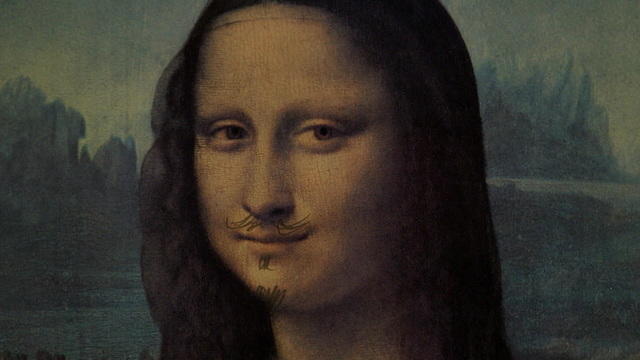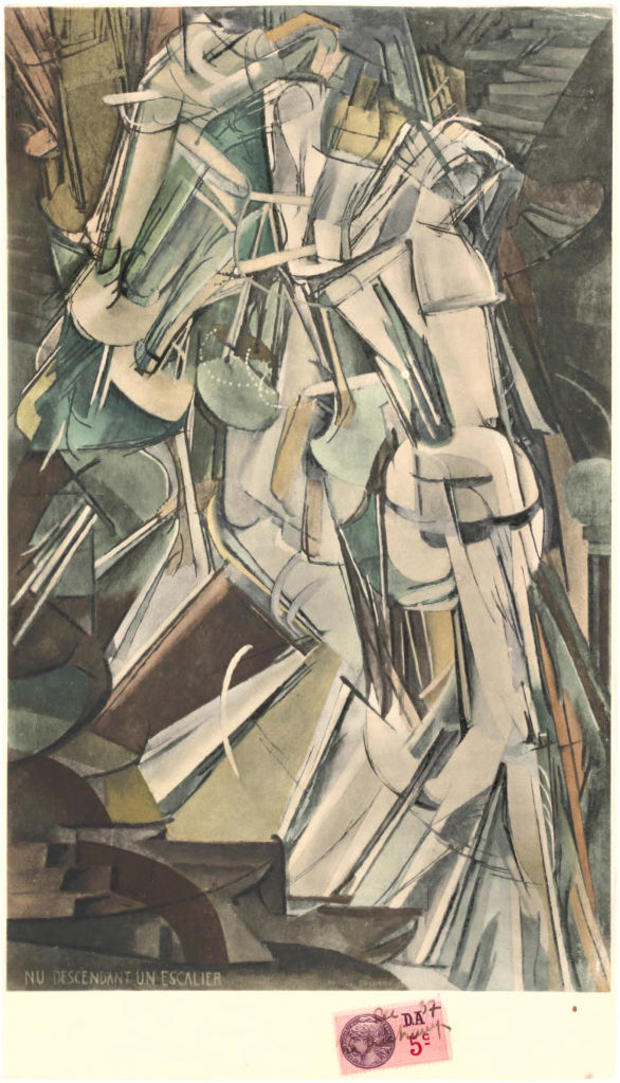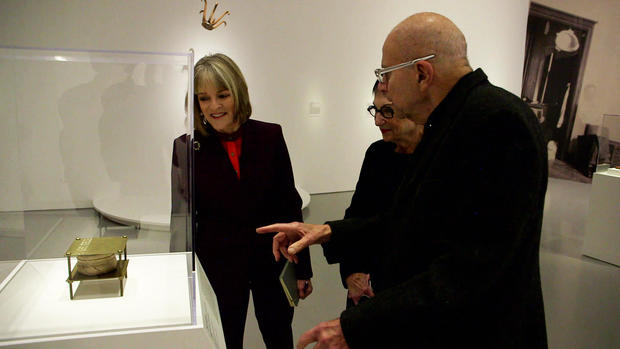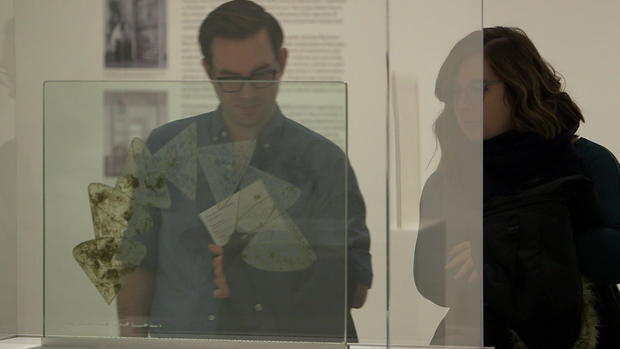▶ Watch Video: Is it art? The works of Marcel Duchamp
This stately Georgian home in Washington, D.C., is filled to the brim with art. But its owners may be hard-pressed to describe the artworks’ visual qualities. “They’re not beautiful,” said Aaron Levine. “It’s not pretty. Nothing here is pretty!“
Aaron and Barbara Levine’s home contains cutting-edge contemporary works by the likes of Bruce Nauman, Marina Abramović, and Andy Warhol.
Correspondent Rita Braver asked, “You just thought it would be really fun to have a lot of pictures of Chairman Mao?”
Aaron replied, “He’s a great colorist!”
It’s all assembled by a pair of quirky octogenarians. Aaron Levine is a personal Injury lawyer. Barbara Levine is a former schoolteacher and mother of three. Just don’t DARE call them collectors. “I hate the word collector,” said Barbara.
Aaron does, too: “Has to do with money.”
Barbara said, “I buy what I love, okay? I buy what talks to me. I buy what makes me feel emotional and loving. I don’t buy it because it fits into my collection.”
Collection or not, right now some of the Levines’ most important works are not on the walls of their home, but at the Hirshhorn Museum, the Smithsonian’s showcase for Modern Art. They have bequeathed the museum one of the most important privately-owned troves of the work of Marcel Duchamp, the French-born iconoclast who redefined the very idea of what makes art.
Braver looked at Duchamp’s 1916 work “Comb” – basically a metal dog comb.
“It has absolutely no aesthetic value,” Aaron said. “If you found it in the gutter, you wouldn’t even take it out.”
“So, then why did you pay a lot of money to own it?” asked Braver.
“Because it’s a Duchampian statement that art may not be pretty. He’s trying to get into your head.”
Born in Normandy in 1887 to a family of traditional painters, Duchamp would cause a sensation when his modernist painting, “Nude Descending a Staircase,” was rejected by an important Parisian Art Show in 1912.
“The fact that viewers probably found it hard to see a nude, or a staircase, in it had something to do with its initial rejection,” said Hirshhorn director Melissa Chiu.
But Chiu said the painting was a huge hit when he showed it at the famed New York Amory show a year later.
Braver said, “This was really the work that started his reputation in the United States.”
“Yes, and probably helped him to make his decision to stay here in this country,” said Chiu.
This version of “Nude,” part of the Levines’ gift, is actually a copy, authorized by Duchamp. He never put much stock in originals.
One of his most famous and outrageous acts involved painting a mustache on copies of Leonardo da Vinci’s revered “Mona Lisa.”
He provoked the art world even more in 1917, with “Fountain,” a urinal he signed with a pseudonym, “R. Mutt.” It was the first of the everyday objects he would later call “readymades.”
In a 1966 British TV documentary, “Rebel Ready Made,” Duchamp said, “The definition of a readymade is, the choice of the artist is enough to transfer it from a functional or industrial form into – supposed to be aesthetic but very different from aesthetic in general.”
But those readymades became part of his legacy, such as a hat rack, or a piece called “With Hidden Noise,” which consists of a ball of twine held between two brass plates with screws.
“And what is it? It’s nothing. It’s a ball of string!” said Aaron. “About a dollar-and-a-half in a hardware store. And then he encases it. What’s he doing? He’s departing, he’s dislocating. He’s getting you to wonder what the hell’s going on!”
“It’s worked – I am wondering that very thing!” Braver laughed.
Duchamp’s work would influence everyone from Andy Warhol (with his soup cans) to Jeff Koons (his “New Hoover Convertibles,” a display of vacuum cleaners).
Melissa Chiu said, “While most people think of Picasso and Matisse, actually it is Duchamp who is probably the most influential artist for younger artists today.”
And for Aaron and Barbara Levine, there is a joy in making sure that future generations will see work that continues to make people ask questions about the very meaning of art:
“What’s the artist saying? Where is he going? What’s that have to do with my perception? How dumb am I that it takes me so long?” Aaron said. “Those games are enticing.”
For more info:
- “Marcel Duchamp: The Barbara and Aaron Levine Collection,” at the Smithsonian’s Hirshhorn Museum, Washington, D.C.
- Online Exhibition: “Marcel Duchamp: It’s Art If I Say So”
Story produced by Sara Kugel. Editor: Steven Tyler.
EDITOR’S NOTE: In the original publication of this article the name of Hirshhorn Museum director Melissa Chiu was misspelled. We apologize for the error.








































